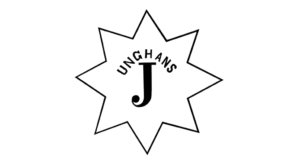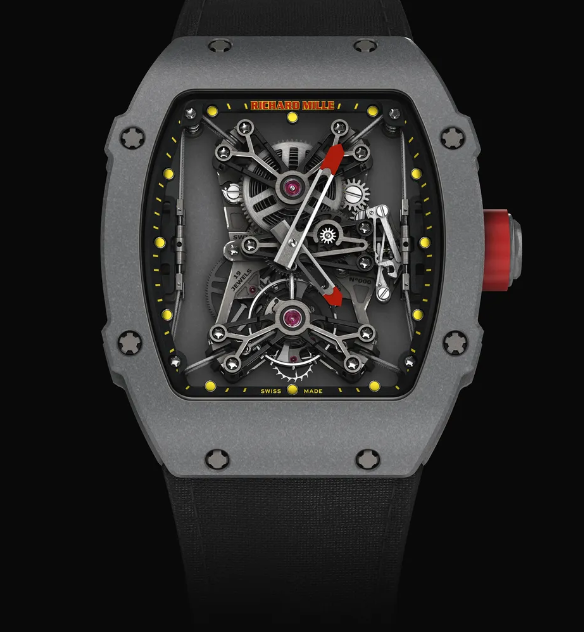In 1860, the merchant Erhard Junghans, together with his brother Jakob Zeller-Tobler, founded an oil factory in Schramberg, which from an economic point of view was a failure.
In 1861 Erhard Junghans founded with his brother Xaver Junghans in Schramberg – Gebrüder Junghans.
After he returned from the United States of America he began manufacturing parts for other Black Forest watchmakers.
From 1866-1867, the first own clocks were produced.
In 1870 it had a daily production of about 60 watches.
Erhard Junghans died in the fall of 1870, after which his widow Luise Junghans took over the management of the company.
On July 1, 1875, the Junghans company was sold. In accordance with the shareholders’ agreement, it was taken over by the eldest son Erhard (d. J.), both as commercial director and technical director. In the years after taking over the company, Arthur Junghans, who had previously worked for a year in watch factories in America, made many technical improvements. In the late 1870s Junghans began producing American-style alarm clocks, which led to strong growth for the company. In 1883 and again in 1894, Arthur Junghansa attempted the production of a simple pocket watch. However, the company experienced a series of setbacks and was forced to cease these attempts. After the merger with Schwenninger Thomas Haller AG, which had successfully manufactured and marketed pocket watches since the mid-1890s, Junghans also had the opportunity to expand its range from 1900 to a pocket watch division.
 In 1888, the company introduced a five-pointed star with a “J” in the center as a trademark. In 1890, this star achieved eight points and is still the hallmark of the company.
In 1888, the company introduced a five-pointed star with a “J” in the center as a trademark. In 1890, this star achieved eight points and is still the hallmark of the company.
In 1903 Junghans with more than 3000 employees and a production of more than three million watches per year, became the largest watch manufacturer in the world.
In 1928 Junghans started clock production, but the movements were originally purchased from Gebrüder Thiel GmbH and were used in Ruhla.
Since 1930, Junghans has made its own mechanisms.
At the same time, it cooperates with the French company ATO and starts to manufacture electric watches with it until 1962.
After the seizure by the Nazis the Junghans of General Erwin Junghans (* 1875, † 1944, son of Arthur Junghans) was adapted for military production. Junghans received numerous defense contracts (precision watches for aircraft and ships, as well as warheads and ammunition of all types) as a result of war preparations. During the war more than 9000 employees worked in air raid shelters in Schramberg mainly producing detonators and other military equipment.
Junghans developed detonators that were manufactured especially in Pforzheim on a very large scale by other companies, which resulted in the total destruction of Pforzheim by the Allies. Junghans also produced weapons under a neutral name in other cities (eg. B. “Messap” in Hamburg).
In 1942, “Eastern workers”, 332 prisoners of war and forced laborers from France along with 90 forced laborers from Poland were housed at Junghans. French workers were quartered in barracks or collective guest houses, while Soviet and Polish workers lived in barracks. After the end of the Second World War the machinery for the production of clock mechanisms was dismantled and transported to France, stopping the production of civilian clocks. However, production resumed in 1946. Various corporate buildings were captured by the Allies. Moreover, Junghans was forced to supply the movements in France, and those that did not sell in France, were sold under the logo of a French watchmaker abroad.
After the war, Junghans focused on producing good quality watches to regain its reputation. As a result, Junghans developed in the 1950s, the largest chronometer manufacturer in Germany. As part of a hostile corporate takeover by the Diehl family of Nuremberg, Junghans lost the company and company management in 1956. The official corporate takeover took place on November 15, 1956. The Diehl Group took over the watch business.
In 1972, Junghans became the official timekeeper of the Olympic Games in Munich.
Since 1984, there have been two separately managed companies: the watch factory Junghans GmbH & Co. KG and Junghans Microtec GmbH.
In 1986 Junghans introduced a radio-controlled table clock, one of the world’s first commercial radio clocks, followed in 1990 with the digital MEGA 1 – the world’s first radio-controlled wristwatch.
In 1995, Junghans presents a combination wristwatch, solar-powered radio and ceramic case, the MEGA solar.
The Diehl Group sold the watch division in 2000 to the holding company Eganagoldpfeil;
The defense technology and company building in Schramberg remained at Diehl. The watch division, at that time, had approximately 220 employees, and the defense division 350.
In 2004 Junghans presented the first multi-frequency clock radio.
As a tribute to the founder of the watch brand “Erhard Junghans” it was introduced in 2006.
Junghans Uhren GmbH filed for bankruptcy on 29 August 2008 after its parent company Eganagoldpfeil ran into financial difficulties.
The company currently has 115 employees. On 22 January 2009, the liquidator stated that a buyer had been found for Junghans Uhren GmbH. Schramberger, entrepreneur, Hans-Jochem Steim together with his son, Hannes Steim took over the business operations and all divisions of the company, which has been operating under the name Junghans watch factory since February 1, 2009.

Never miss a story that matters. Subscribe to our newsletters!









